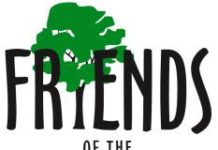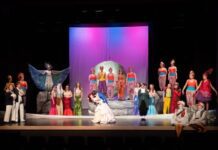Christmas truce
Christmas has a fascinating effect on people in all sorts of situations. The famous “Christmas Truce” in 1914 is one example. As Christmas Day dawned on the Western Front, just a few months into World War I, German and British soldiers, sitting in their trenches just 100 yards from each other, began to sing Christmas carols. In many places along that long front line, men on both sides began to slowly leave their positions and venture into no-man’s land to shake hands and swap food. It was an extraordinary thing to see in war, and in most places it didn’t last long. In other parts, no firing resumed until the New Year.
Some soldiers said afterwards that, if they had been left alone, no firing would ever have resumed; but military leaders were not happy with the fraternisation, and specifically forbade any further incidents of Christmas peace. By the following December, life and death had hardened attitudes on both sides, and no further attempts were made to repeat the 1914 event. But the very fact that it happened once, that Christmas tradition could overcome even in the midst of war, was an indication of how deeply the so-called Spirit of Christmas runs.
The power of music
In late November, 1984, Irish musician Bob Geldof of the band The Boomtown Rats was watching television when he saw a report on the dreadful famine that was sweeping through Ethiopia. Feeling deeply that he had to do something, he decided that his main talent was as a musician and songwriter, so he contacted Midge Ure of the band Ultravox and between them they wrote the song “Do They Know It’s Christmas?”. By November 25, they had convinced forty musicians from other bands and solo artists to come together on a Sunday in London where the song was recorded, produced and, within twenty-four hours, had been pressed. The single was released on December 3, an amazingly quick turnaround for a recording. Musicians, singers, engineers, radio djs, record labels, and record stores all gave their time and talent free of charge, and the song became the UK’s No. 1 Christmas single, traditionally a coveted spot. The single raised $24 million (USD), and similar records were recorded in Canada (Tears Are Not Enough) and the US (We Are The World), as well as in France and Spain.
It didn’t end there. In 1985 came Live Aid, twin concerts in London and Philadelphia. It was the start of a series of charity recordings and concerts, and all started when Bob Geldof realised that Christmas was the perfect time to call on people’s generosity and goodwill. He even managed to get Margaret Thatcher to donate to the cause. Band Aid and Live Aid combined raised about $150 million (USD) for the famine relief effort in Ethiopia.
Peace campaign
In 1969, John Lennon and Yoko Ono were in the middle of a peace campaign. They arrived in Toronto on December 15, and, on the same day, billboards were unveiled in cities around the world, with the simple message: “War is Over. If you want it. Happy Christmas from John & Yoko”. Simple, possibly simplistic, but it made the point. The campaign was launched in 12 major cities: New York, Los Angeles, Toronto, Rome, Athens, Amsterdam, Berlin, Paris, London, Tokyo, Hong Kong and Helsinki. In Toronto, more than 30 billboards were set up. Two years later, John and Yoko released their famous Christmas single: “Happy Xmas (War is over)”.






